| |
Champion Lake Vet Centre
121 Westfield Road,
Camillo WA 6111
| |
|
|
 | | | Common skin lumps | | | | | | | | Uh oh! You were having a lovely cuddle with your pet when you felt a small lump on their skin… what could it be, and does it warrant a vet visit?
Types of skin lumps
Lumps on your pet’s skin may be areas of localised infection or inflammation, cysts or tumours.
Skin tumours are most commonly seen in middle-aged to older pets, however, some tumours, such as histiocytomas and mast cell tumours, can develop in younger pets too.
Skin tumours can be benign (i.e. not spreading or causing your pet to become unwell) or malignant (aggressive tumours that can spread around your pet’s body and cause other problems).
Should you just monitor your pet’s lump or get it checked?
It’s best to have any new lump assessed, especially if it’s growing or causing irritation to your pet. In the case of malignant tumours, prompt diagnosis and treatment will improve the odds of a successful outcome.
Our vets will begin by assessing your pet’s lump visually, as certain lumps (such as skin tags) can have a distinctive appearance. If your pet is amenable, we may be able to collect samples from their mass for analysis during the consultation, using a technique called a fine needle aspiration. This involves using a needle to collect material from the lump, and examining it under the microscope for evidence of bacteria, inflammation or distinct tumour cells.
Otherwise, we will discuss the option of a surgical biopsy to send a sample of the lump or the entire mass away to the pathology laboratory for testing.
Get the jump on lumps and bumps with prompt vet checks for your pet! | |
|
|
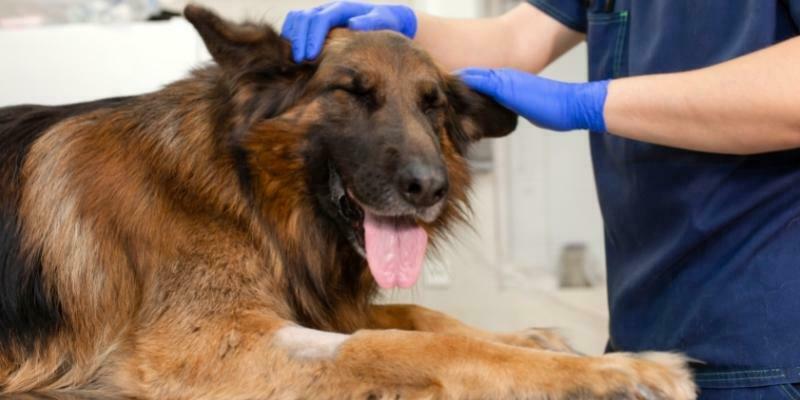 | | | Putting the pep back in Shep's step | | | | | | | | Jen arrived home from a night shift and immediately knew something was wrong with her beloved eight-year-old German shepherd, Shep, who looked very lethargic. She phoned her regular vet clinic to request an urgent appointment.
At the clinic, the vet examined Shep and found him to be weak, with pale gums and his belly felt distended.
She advised Jen that Shep appeared “shocky” (meaning he had insufficient blood flow around his circulatory system), and given his breed, age and distended abdomen, she was concerned about a potential intra-abdominal bleed from a tumour. Jen consented to intravenous fluids to improve Shep’s blood pressure, and further investigation with blood tests and abdominal ultrasound.
Shep had evidence of anaemia (decreased red cells) on his blood tests, suggesting previous blood loss. The abdominal ultrasound showed free fluid in Shep’s belly and a large lesion on his spleen, confirming the vet’s suspicions of a bleeding mass. Jen was updated over the phone, and immediately consented to a blood transfusion for Shep, and emergency surgery to remove his diseased spleen.
After further stabilisation with a blood transfusion (thanks to the lucky presence of a staff member’s lovely donor greyhound Pablo), Shep underwent a successful exploratory laparotomy surgery to remove his spleen and send it for laboratory testing. With good pain relief, he made a smooth recovery.
Unfortunately, given Shep’s breed, he was at high risk of having a malignant (aggressive) splenic tumour called a haemangiosarcoma. Very happily, Shep’s splenic tumour turned out to be a haemangioma, a benign tumour that would be cured by his surgery.
Jen was relieved and delighted that she could spend more time with her best boy, Shep. After she recovered from a very exhausting 24 hours, Jen dropped into the clinic with a box of cookies (to show her appreciation for the excellent care of the veterinary team), and a generous pack of dog treats for Pablo, the life-saving greyhound. | |
|
|
 | | | Ecuador grants rights to individual nonhuman animals | | | | | | | | For the first time in history, a nation has chosen to acknowledge the rights of individual wild animals.
When Ecuadorian environmental lawyer, Hugo Echeverría, won a groundbreaking case for a woolly monkey named Estrellita in February, he paved the way for the rights of individual nonhuman animals to be legally recognised throughout the country.
The ethical conundrum of Estrellita’s case begins when she was taken illegally from the wild at just a month old to live with librarian Ana Beatriz Burbano Proaño and her family.
Over the 18 years that Estrellita lived with the Burbano Proaño family, she adopted the family's customs and learnt to communicate and develop relationships with them, with Ms Burbano Proaño even considering herself Estrellita’s mother.
But when the Burbano Proaño family’s housing of Estrellita was reported to the Ministry of Environment in 2019, she was seized by Ecuadorian state officials and relocated to a zoo, where she suffered a sudden cardio-respiratory arrest and died within a month of being taken.
It’s suggested that Estrellita’s cardio-respiratory arrest was linked to the distress of being placed in an unfamiliar environment, as her species particularly struggles with changing habitats.
Despite both the state and Ms Burbano Proaño having good intentions, it was determined by the court that taking Estrellita originally from the wild and her later zoo relocation were equal violations of Estrellita’s best interests and her right to freely express ape-like behaviour.
The court therefore ruled that individual nonhuman animals should have their best interests legally protected under Ecuador’s constitutional “rights of nature”.
Previously, the “rights of nature" were only recognised for an entire species, rather than individual animals, however Echeverría argued that individual animals are what make up an entire species, and what can happen to one singular animal can impact the species as a whole.
Estrellita’s case sets a precedent for animals everywhere and raises an ethical quandary for all other countries around the world as we ask, how can we too follow suit in recognising legal rights for our native animals and representing them, both individually and species-wide?
Read more about the Estrellita case from Science Alert. | |
|
|
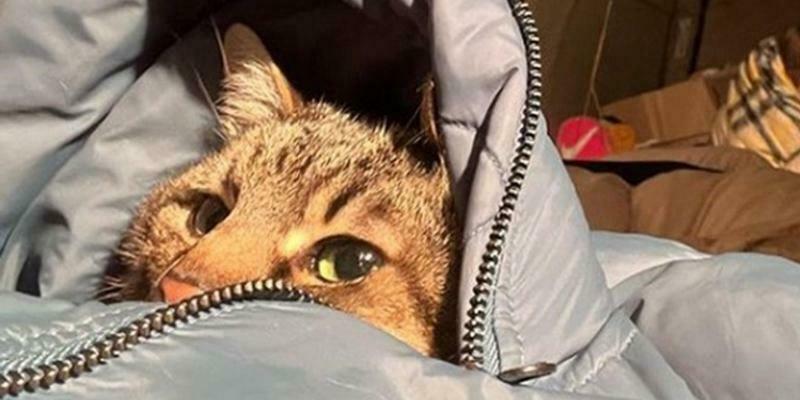 | | | Animal News In Brief | | | | | | | | Stepan the cat hiding in his owner's jacket after shells hit Kharkiv
Image source: Sky News
Insta-famous cat flees Ukraine and raises money for charity
When explosions began erupting onto neighbouring homes on February 24, 2022, black-and-brown-striped rescue cat, Stepan, and his family were forced to leave their home in Kharkiv, north-east Ukraine. Stepan’s owner, 13-year-old Anna, shared the news that Russia had started shelling their city to Stepan’s very own Instagram account, @loveyoustepan, which has a following of over 1.3 million people. When her post went viral, Anna and her family were offered help by the World Influencers and Bloggers Association to relocate to France until the day they can “return home." Anna has been able to use the famous feline’s social media platform to help others, fundraising over $14,048 AUD for animals affected by the war, which will be distributed among the charities Happy Paw, UAnimals, Mykolaiv Zoo, XII Months and Plyushka. The war, as Anna describes on Instagram, is a “big tragedy for my country and people,” but in all of its darkness, Anna is “very grateful for [people’s] support."
Read more about Stepan’s cause from Sky News.
-----
Farm animals heroically saved from flooding
The ongoing floods in NSW have seen many leave their belongings behind as they flee for safety, unfortunately among these belongings are a number of helpless farm animals heartbreakingly left to fend for themselves. Prompted by the good of their hearts, a group of rescuers have been bringing food to the displaced animals and attempting to save as many as possible, with one rescuer, Josh Robinson, describing the animals being “pretty much underwater.” With emergency resources already overwhelmed, locals are doing all they can to help. "We call the SES, they tell us to call the police, the police tell us to call the RSPCA and they tell us to call the SES again, so we are just going in circles,” said Mr Robinson. One rescuer on the frontline, horse breeder Thomas Jones, says he’s “out here risking [his] life," because knowing that animals are out in the floodwaters just “doesn’t sit well [with him] at all.” The volunteers, courageously saving countless animals, “come from everywhere,” said Mr Robinson, just to “do what [they] can.”
Read more about the NSW flood volunteers from Nine.
-----
Sustainable options for when your pet ‘bugs’ you for a treat
Six women from Washington have created a startup company for dog treats made from insects. Dubbed ‘Just Right Bite’, the business is driven by the team’s collective interest in sustainable food options for their pooches. As methane production from mass farming industries continues to impact climate change, incentives for new treat alternatives are emerging. Working in their own kitchens, the Just Right Bite team used the $595 prototype grant they were awarded from the Buerk Center for Entrepreneurship to create a type of insect-based flour that could be used in the pet treats. After finalising their product, they entered the 2022 Alaska Airlines Environmental Innovation Challenge competition, where pets and humans trialled the treats. Becoming a hit, the Just Right Bite team won a $10,000 prize from the Herbert B. Jones Foundation. The team are now figuring out which avenues they’ll take to grow their brand and make the word on their treat, the word on the street.
Read more about Just Right Bite, the sustainable dog treats start-up from GeekWire. | |
|
|
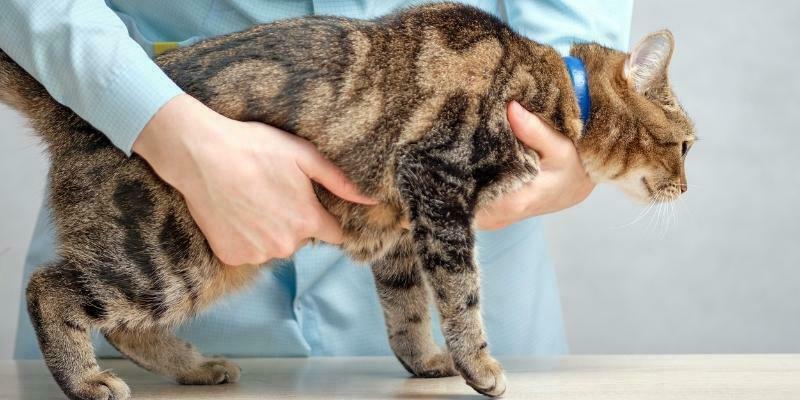 | | | To test or not to test? | | | | | | | | If you’ve noticed that your pet has a new lump, especially if it is growing quickly or causing discomfort, we recommend booking a consultation with our veterinary team for a proper assessment. With physical examination and further laboratory testing if needed, we can differentiate tumours from other types of tissue swelling (e.g. inflammation, infection or cysts) and ascertain the specific type of tumour.
Confirming the exact type of tumour affecting a pet is important, as it tells us how the tumour is likely to behave, i.e. whether it is benign (harmless) or malignant (capable of invading and damaging local tissues or spreading elsewhere in the body to cause unwellness).
But how do we test lumps? The first step is determining the cell type involved. If the lump is easily accessible and your pet is cooperative, we can sometimes perform a fine needle aspiration during the initial consultation. This involves passing a fine needle into your pet’s lump, and then transferring the collected material onto a glass slide to examine under the microscope. Some common lumps, such as lipomas and mast cell tumours, can often be diagnosed this way.
However, if your pet is wriggly, or if the lump is very firm, difficult to access or we're particularly concerned about it, we may recommend booking your pet in for a surgical biopsy under general anaesthesia. Depending on the extensiveness of the lump, we may remove the entire lump or just a portion, and send the sample to a laboratory for testing.
Once we have a diagnosis for your pet’s lump, we can then make informed recommendations on whether they require any further testing or treatment.
With lumps, it’s always best to test! | |
|
|
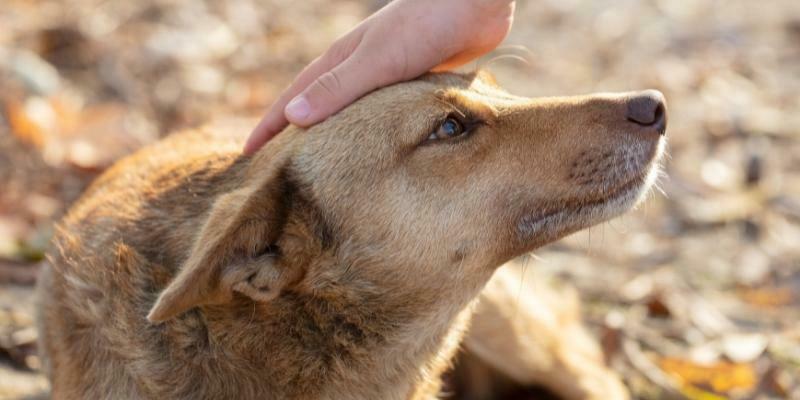 | | | Not-so-simple fatty tumours | | | | | | | | Lipomas are fatty tumours that are commonly diagnosed in middle-aged to older dogs of any breed, but particularly breeds such as labradors, beagles, weimaraners and schnauzers. However, there can be more to these lumps than what first meets the eye! Here are a few lesser-known facts about lipomas.
There are different types of lipoma
The majority of lipomas that we see in dogs are simple lipomas. These benign (harmless), slow-growing masses most commonly form beneath the skin on the body or legs. They generally don’t cause issues unless they grow big enough to cause general discomfort or in a location that impedes walking.
On occasion, simple lipomas can actually develop and grow within the chest or belly. If the masses in these tricky areas grow large enough, they can cause breathing problems or abdominal pain.
As well as simple lipomas, dogs can develop infiltrative lipomas. These tumours don’t spread to distant areas of the body, but can invade and cause disruption of surrounding tissues (such as the muscles in the legs), almost like large tree roots. They can also be difficult to remove surgically, often requiring more invasive surgeries and having a higher likelihood of regrowth.
Lastly, lipomas can form as myelolipomas, which are fatty masses within the spleen or liver. These are mostly harmless, insignificant findings but, rarely, can cause bleeding within the belly.
Even if it feels like a lipoma, not every mass beneath the skin is a lipoma!
Some other tumour types, such as mast cell tumours occurring beneath the skin or soft tissue sarcomas, can feel similar to lipomas. Unfortunately, mast cell tumours and soft tissues sarcomas can actually show malignant (harmful) behaviours, so are best diagnosed and treated as early as possible.
Remember: not all fatty lumps can be lumped together!
If you notice any masses beneath your dog’s skin, it’s best to book a consultation so that our experienced vet team can take a look. | |
|
|
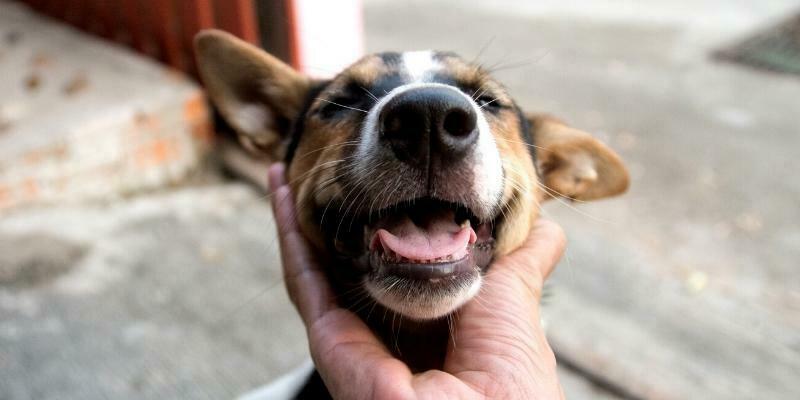 | | | When a lump isn't a tumour | | | | | | | | Yes, a lump on your pet’s skin could potentially be a tumour requiring further investigation. But rest assured, there are a lot of other things it could be too! Here are some common alternative reasons for localised skin swelling in dogs and cats.
Infection
Localised skin infection is most commonly seen in pets as:
- Pyotraumatic dermatitis, also known as a “hot spots”
Hot spots occur when your pet scratches or nibbles at an area of skin irritation, rapidly creating an area of inflamed, oozing and often painful skin that can become infected too. These areas often need to be clipped and cleaned often under sedation, and treated with anti-inflammatories and antibacterial treatments.
- Abscesses
Abscesses are pockets of infection that can form beneath the skin due to penetrating injuries such as cat bites or foreign bodies (e.g. grass seeds). They may require surgery to drain out pus, extract any foreign bodies, and cut out damaged tissue.
Allergic reaction
Hives are areas of skin swelling which often occur during mild allergic reactions to insect bites or contact with certain plants, foods or chemicals. Hives can often be treated with short courses of antihistamines or anti-inflammatories, and avoidance of the underlying trigger.
Cyst
Sebaceous cysts are skin swellings containing thick creamy sebum material, and occur when sebaceous (oil) glands in the skin become blocked. Unless they become irritated or infected, they can be left alone.
Callus
Calluses are areas of thickened skin over pressure points, commonly developing on the elbows of large breed dogs who lie on hard surfaces. Calluses do not require treatment unless they become infected or irritated.
If you find any skin swelling on your pet, the best course of action is to have it checked promptly by one of our vets. | |
|
|
| | This email contains comments of a general nature only and is not intended to be a substitute for professional veterinary advice. It should not be relied on as the basis for whether you do or don't do anything.
All content © PetPack 2022 | |
|
|
This email was sent to:
email@example.com
Champion Lake Vet Centre
121 Westfield Rd
Camillo, WA 6111
|
|
|
|